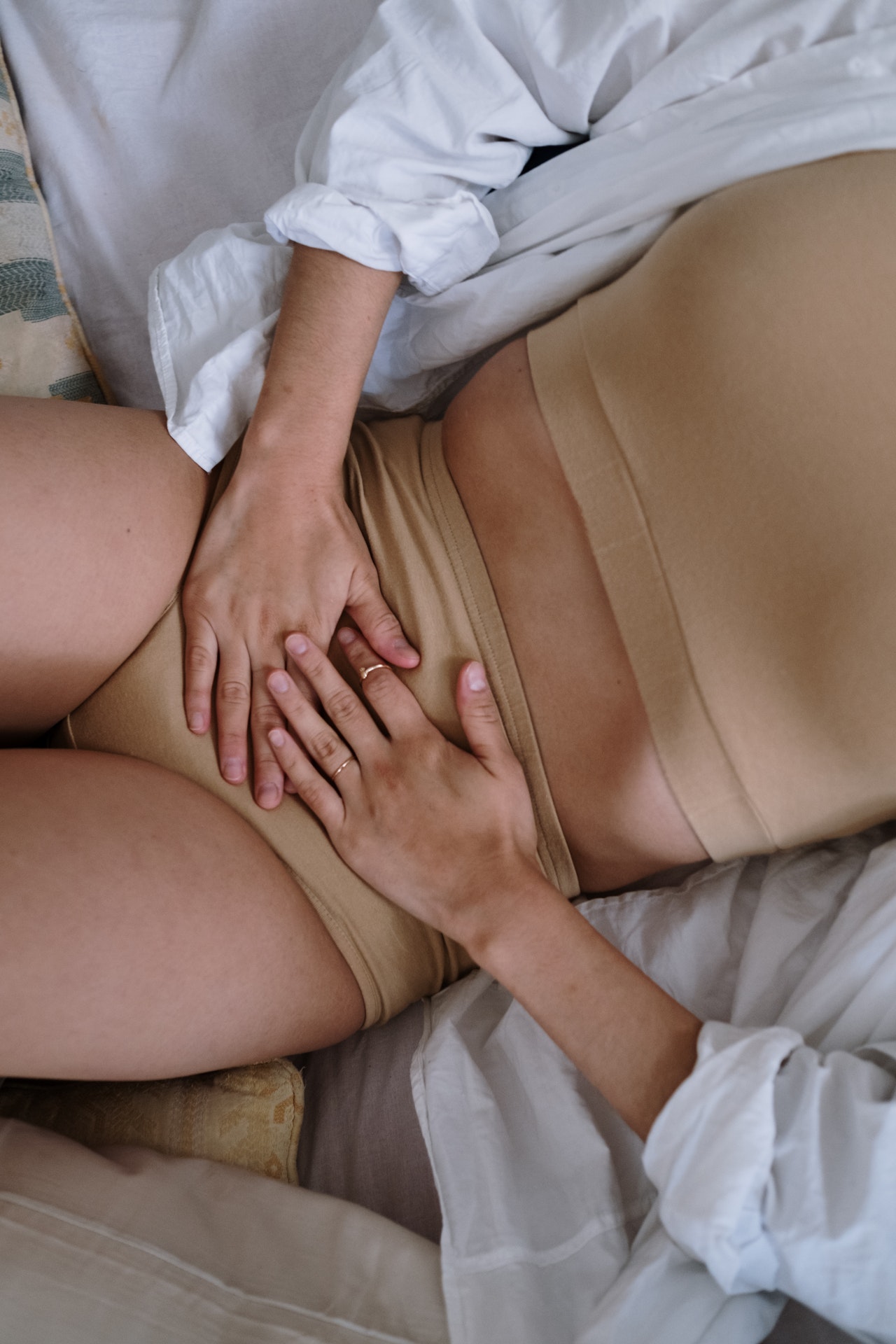The menstrual cycle is an integral part of our bodies, yet many of us may not be completely familiar with it. Some sex ed courses failed to provide some of the most important and amazing details about our cycles and hormones.
Healthy hormone balance throughout your cycle can help you get pregnant faster, have mood stability, and better periods, among other things.
A woman’s cycle is split into 4 main parts: your period, the follicular phase, ovulation, and the luteal phase. Understanding these 4 parts and the hormones that govern them can help you live and feel your best!
The Period
Menstruation is probably the most well known part of our cycles, but do you really know everything about it? Let’s dive in.
Your period marks cycle day (CD) 1 the very first day of your cycle. Menstruation is a part of the follicular phase, but we’ll get there in a minute.
During your period, your uterus sheds its lining, the lining that was supposed to nourish a baby, had you have gotten pregnant. During your entire cycle, your uterus is basically preparing for pregnancy. If it doesn’t happen, then you menstruate!
Your period is sometimes referred to as your “fifth vital sign” because it can provide you with key insights into your overall health, similar to body temperature and blood pressure. Drastic changes in your period can be indicative of different types of health issues – anywhere from hormone imbalance to thyroid malfunction.
There are a couple different signs that can try and explain why you are experiencing such difficult periods.
If your period is painful…
Mild menstrual cramps are an incredibly common period symptom – this is because the uterus contracts as it sheds its lining. However, if you are experiencing such severe ones as well as nausea, headaches, fatigue or dizziness, there may be something greater going on.
Severe menstrual cramps could be a sign of endometriosis, uterine fibroids, or pelvic inflammatory disease, among others. Make sure to check with your doctor if this is something that you experience regularly.
If you experience spotting before your period…
Spotting before your period, while pretty common, can be indicative of low progesterone levels. A decrease in the hormone progesterons is actually what causes your period to come.
Sometimes, if progesterone levels aren’t high enough when they should be or if they start decreasing a little too early, you may experience some spotting. We recommend talking to your doctor if you have specific concerns.
If your periods are extremely heavy…
Heavy periods, also called “menorrhagia,” are defined by needing to change your tampon or pad every hour or even more. It’s natural for some women to naturally bleed more heavily than others, but it may become a concern when it begins to affect your normal daily activities.
There may be other symptoms that may affect your period such as brown blood, or irregular cycles as well. If these are things that have been having an effect on your life, please make sure to test your hormones and consult with your doctor!
The Follicular Phase
As we mentioned, the follicular phase begins on the first day of your period, cycle day 1, and ends on the day of ovulation. During this first phase, the pituitary gland produces FSH, follicle stimulating hormone, which stimulates the ovary to produce follicles in preparation to release an egg during ovulation.
After one of the largest follicles becomes dominant, it will begin to produce estrogen. This is the follicle that will release an egg during ovulation that cycle. Estrogen is the hormone that thickens the uterine lining in preparation for implantation and eventually, pregnancy.
After a high enough amount of estrogen is produced, it actually triggers an “LH surge.” This is where the luteinizing hormone spikes and causes the dominant follicle to rupture and release the egg. That leads us to ovulation!
Ovulation
Ovulation – arguably the most important part of your cycle if you are trying to conceive. Ovulation marks the end of the follicular phase and the beginning of the luteal phase.
Ovulation is when the ovary releases an egg so that it can ultimately be fertilized by sperm in order to create an embryo. Pregnancy is most likely to occur if intercourse takes place 5 days before ovulation and the day after ovulation.
This is because, although ovulation occurs within 12-24 hours since an egg only lives that long, sperm can live within the female reproductive system for up to 5 days!
Right before ovulation, LH will surge to cause the ovary to release the egg. After the egg releases, each of these hormones drop and progesterone will begin to rise.
For most women, cycles will last anywhere from 21-35 days. Ovulation typically occurs within the middle of this cycle – for example: if your period is 28 days long, ovulation will occur on cycle day 14.
The Luteal Phase
The luteal phase starts after ovulation and lasts until your next period begins. During the luteal phase, your progesterone levels rise.
Progesterone is needed to make the uterus “sticky” enough to allow an embryo to implant if conception occurs. It needs to remain elevated for several days during the luteal phase to allow for the best chance at pregnancy and a healthy cycle length — even if you’re not trying to conceive at the moment.
During the luteal phase, it’s important to confirm that ovulation did in fact occur and that it was considered healthy. This means that not only an egg was released, but also post ovulation hormone levels were elevated long enough to allow for the best chance at conception.
Knowing everything about your cycle and hormones can be essential if you are trying to conceive, or even if you are simply trying to feel better in your everyday life!
Written by: Dr. Amy Beckley, PhD, Founder and Inventor of the Proov test — the first and only FDA-cleared test to confirm ovulation at home.




